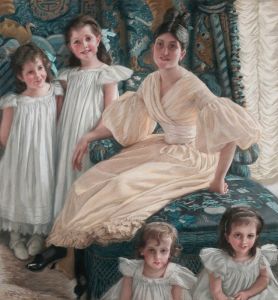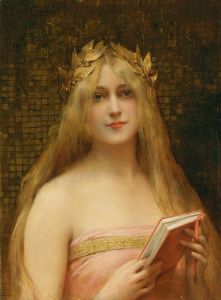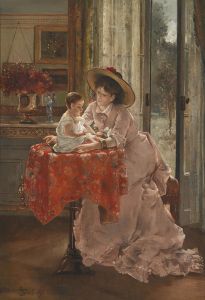
Mademoiselle de Clermont-Tonnerre
A hand-painted replica of Alfred Stevens’s masterpiece Mademoiselle de Clermont-Tonnerre, meticulously crafted by professional artists to capture the true essence of the original. Each piece is created with museum-quality canvas and rare mineral pigments, carefully painted by experienced artists with delicate brushstrokes and rich, layered colors to perfectly recreate the texture of the original artwork. Unlike machine-printed reproductions, this hand-painted version brings the painting to life, infused with the artist’s emotions and skill in every stroke. Whether for personal collection or home decoration, it instantly elevates the artistic atmosphere of any space.
Alfred Stevens, a Belgian painter renowned for his depictions of elegant women and refined interiors, created the painting Mademoiselle de Clermont-Tonnerre. The artwork exemplifies Stevens' mastery in capturing the sophistication and grace of his subjects, a hallmark of his career during the 19th century. Known for blending elements of realism with a keen sense of fashion and social commentary, Stevens often portrayed women of the upper class, reflecting the cultural and societal norms of his time.
Mademoiselle de Clermont-Tonnerre is believed to depict a member of the Clermont-Tonnerre family, a prominent French noble lineage with historical significance dating back to the medieval period. The sitter's identity, however, remains largely undocumented in available sources, and specific details about her life or connection to Stevens are not well established. The painting showcases Stevens' characteristic attention to detail, particularly in the rendering of fabrics, textures, and the sitter's attire, which likely reflects the fashion trends of the late 19th century.
The composition of the painting highlights Stevens' ability to balance realism with an air of elegance and intimacy. The sitter is portrayed in a poised and contemplative manner, emphasizing her individuality and social status. Stevens' use of light and color enhances the overall atmosphere of refinement, a recurring theme in his body of work. His technical skill in portraying the nuances of expression and posture further underscores his reputation as a leading portraitist of his era.
While Mademoiselle de Clermont-Tonnerre is not as widely recognized as some of Stevens' other works, it remains an important example of his artistic focus on the intersection of beauty, fashion, and identity. The painting reflects the cultural milieu of the Belle Époque, a period marked by artistic innovation and a fascination with modernity and elegance.
Due to limited documentation, further details about the painting's provenance, commission, or current location are not readily available. As with many of Stevens' works, the painting serves as both a visual record of its time and a testament to the artist's skill in capturing the essence of his subjects.


















